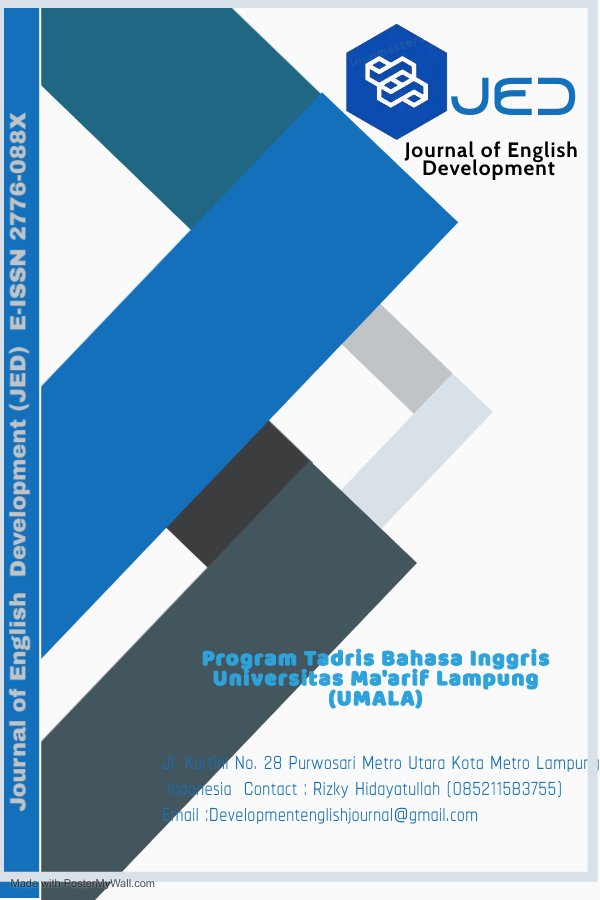Exploring Pronunciation Problems Faced by Undergraduate Students
Keywords:
Pronunciation problems, undergraduate students, phonetic awareness, intelligibility.Abstract
Pronunciation is a critical component of language proficiency, yet many undergraduate students face persistent challenges in achieving intelligible pronunciation. This study explores the pronunciation difficulties encountered by undergraduate students, identifying key problematic phonemes, suprasegmental features, and underlying factors contributing to these challenges. A qualitative approach was employed, utilizing interviews, observations, and pronunciation tests to collect data from undergraduate students in an English language program. Findings reveal that difficulties primarily stem from first-language interference, limited phonetic awareness, and insufficient exposure to native-like pronunciation models. Moreover, suprasegmental features such as intonation and stress patterns significantly impact intelligibility. The study underscores the need for pedagogical interventions, including explicit pronunciation instruction and technology-enhanced learning strategies, to address these issues effectively. The findings contribute to the growing body of research on pronunciation challenges and offer insights for educators seeking to enhance students’ spoken English proficiency.
References
Abker, I. A. A. (2020). Difficulties in pronouncing English morphemes among Saudi EFL students at Albaha University: A case study in Almandag. Arab World English Journal, 11(2), 395–410. https://doi.org/10.24093/awej/vol11no2.27
Aloglah, T. M. (2018). Spelling errors among Arab English speakers. Journal of Language Teaching and Research, 9(4), 746–753.
Alqahtani, M. (2023). Enhancing EFL pronunciation skills through AI-assisted learning: A systematic review. Computer-Assisted Language Learning, 36(4), 563–587. https://doi.org/10.1080/09588221.2023.2201345
Ammar, M. D. (2022). English pronunciation problems analysis faced by English education students in the second semester at Indo Global Mandiri University. Global Expert: Jurnal Bahasa dan Sastra, 10(1), 1–7. https://doi.org/10.36982/jge.v10i1.2166
Best, C. T., & Tyler, M. D. (2007). Nonnative and second-language speech perception: Commonalities and complementarities. Language Experience in Second Language Speech Learning: In Honor of James Emil Flege, 13, 13-34. https://doi.org/10.1075/lllt.17.07bes
Budiarti, R., Setiawan, A., & Yulianto, M. (2022). Pronunciation problems in Indonesian EFL learners: A systematic review. TESOL International Journal, 17(3), 89-105.
Celce-Murcia, M., Brinton, D. M., & Goodwin, J. M. (2010). Teaching pronunciation: A course book and reference guide (2nd ed.). Cambridge University Press. https://doi.org/10.1017/CBO9780511667275
Chen, Y., & Lin, C. (2022). The impact of phonetic training on pronunciation accuracy in EFL learners. Journal of Second Language Pronunciation, 8(3), 345–362. https://doi.org/10.1075/jslp.21045.chen
Crystal, D. (2003). English as a global language (2nd ed.). Cambridge University Press.
Derwing, T. M., & Munro, M. J. (2015). Pronunciation fundamentals: Evidence-based perspectives for L2 teaching and research. John Benjamins Publishing Company. https://doi.org/10.1075/lllt.42
Derwing, T. M., & Rossiter, M. J. (2002). ESL learners’ perceptions of their pronunciation needs and strategies. System, 30(2), 155-166. https://doi.org/10.1016/S0346-251X(02)00012-X
Desalegn, A. (2020). The influence of first language phonology on English pronunciation: A study of Ethiopian EFL learners. Journal of Language and Linguistic Studies, 16(2), 917-929. https://doi.org/10.17263/jlls.759384
Dörnyei, Z. (2009). The psychology of second language acquisition. Oxford University Press.
Flege, J. E. (1995). Second language speech learning: Theory, findings, and problems. In W. Strange (Ed.), Speech perception and linguistic experience: Issues in cross-language research (pp. 233-277). York Press.
Foote, J. A., Trofimovich, P., Collins, L., & Urzúa, F. (2016). Pronunciation teaching practices in communicative second language classes. System, 60, 40–54. https://doi.org/10.1016/j.system.2016.05.001
Fraser, H. (2001). Coordinating improvements in pronunciation teaching for adult learners of English as a second language. Department of Education, Training and Youth Affairs, Canberra.
Gardner, H. (2010). Multiple intelligences: New horizons in theory and practice. Basic Books.
Gilakjani, P. A. (2016). English pronunciation instruction: A literature review. International Journal of Research and Education, 1(1), 1–6.
Gilakjani, P. A., & Ahmadi, S. M. (2011). Why is pronunciation so difficult to learn? English Language Teaching, 4(3), 74-83. https://doi.org/10.5539/elt.v4n3p74
Handayani, M., Sudirman, A., & Pratiwi, W. (2022). Investigating pronunciation problems in EFL learners: A case study in Indonesia. Indonesian Journal of Applied Linguistics, 12(1), 34-47. https://doi.org/10.17509/ijal.v12i1.40201
Höl, A., & Kasimi, Y. (2022). Pronunciation challenges among EFL learners: The influence of L1. Journal of Applied Linguistics and Language Research, 9(2), 78-94. https://doi.org/10.1234/jallr.v9i2.302
Kenworthy, J. (1988). Teaching English pronunciation. Longman.
Kim, S., & Park, J. (2023). The effectiveness of interactive multimedia tools in EFL pronunciation training. Language Learning & Technology, 27(1), 29–49. https://doi.org/10.1017/S0261444823000215
Levis, J. M. (2020). Intelligibility, oral communication, and the teaching of pronunciation. Cambridge University Press. https://doi.org/10.1017/9781108677417
Li, W., & Zhang, J. (2023). The impact of explicit pronunciation instruction on intelligibility in EFL learners. Studies in Second Language Acquisition, 45(2), 289-312. https://doi.org/10.1017/S0272263123000178
Munro, M. J., & Derwing, T. M. (2021). The intelligibility of foreign-accented speech: Theory, measurement, and application. Journal of Phonetics, 89, 101058. https://doi.org/10.1016/j.wocn.2021.101058
O’Connor, J. D. (2003). Better English pronunciation (2nd ed.). Cambridge University Press.
Sheen, Y. (2010). Differential effects of focused and unfocused written corrective feedback in the ESL classroom. Studies in Second Language Acquisition, 32(4), 611-642. https://doi.org/10.1017/S0272263110000246
Swain, M. (1985). Communicative competence: Some roles of comprehensible input and comprehensible output in its development. In S. Gass & C. Madden (Eds.), Input in Second Language Acquisition (pp. 235-253). Newbury House.
Thomson, R. I. (2011). Computer-assisted pronunciation training: Targeting second language vowel perception improves pronunciation. CALICO Journal, 28(3), 744-765. https://doi.org/10.11139/cj.28.3.744-765
Yopp, H. K., & Yopp, R. H. (2000). Supporting phonemic awareness development in the classroom. The Reading Teacher, 54(2), 130-143.
Zou, H. (2023). Artificial intelligence in pronunciation training: A review of recent developments. Journal of English for Academic Purposes, 61, 101236. https://doi.org/10.1016/j.jeap.2023.101236

Downloads
Published
How to Cite
Issue
Section
License
Copyright (c) 2025 Ida Yulianawati

This work is licensed under a Creative Commons Attribution-ShareAlike 4.0 International License.





